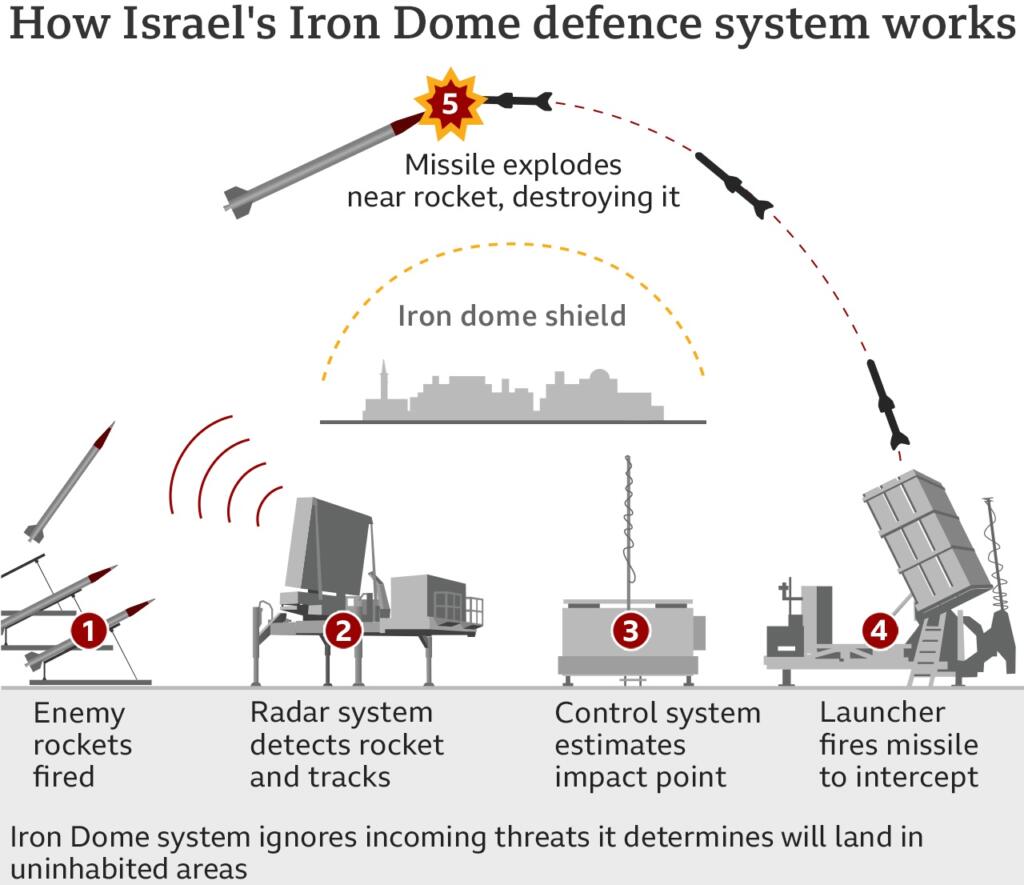Once again, the effectiveness of Israeli Defence systems was brought to bear when recent Iranian missile attacks on Israel launched more than 200 ballistic missiles. With the Arrow systems, which can intercept missiles at altitudes higher than the Earth’s atmosphere, and David’s Sling with its operational capability in medium- to long-range missile interceptions, the great majority of the approaching missiles were neutralized. Together with Iron Dome, these technologies create a protective barrier that positions Israel solidly to protect itself against an increasingly complex threat from the region.
Other examples of must-have missile defense systems are the Arrow and David’s Sling, meant to shield Israel from some of the more deadly aerial threats. Where Iron Dome is intercepting short-range rockets, David’s Sling and Arrow 2 and 3 are meant to target the long-range ballistic missiles that fly higher in altitude, much faster.
These systems form part of the multi-layered air defense system in Israel intended to counter attacks from opposition forces, most of which have considerable missile and drone capabilities, such as Iran, Hezbollah, and Hamas.
What does the anti-missile system “David’s Sling” or “Arrow” carry?
Israel built the “David’s Sling” and “Arrow” systems to counter medium- to long-range ballistic missile threats. These are advanced missile defense systems coming on top of the better known “Iron Dome.” The latter intercepts rockets traveling a short distance. While designed to hit medium- and long-range missiles as well as aerial threats, the Arrow systems are Arrow 2 and Arrow 3-meaning they are meant to hit even longer-range missiles-like an ICBM.
What is special about the Iron Dome in distinction from “David’s Sling” and “Arrow”?
David’s Sling systems and Arrow systems are intended to intercept high-altitude, long-range missiles, whereas the Iron Dome defends against short-range rockets and drones in one way or another. The range of David’s Sling is from 25 to 186 miles and is intended for medium- and long-range missile interceptions. But the Arrow 2 and Arrow 3 systems can intercept missiles beyond Earth’s atmosphere.
Now, how good are these systems?
Over two hundred ballistic missiles were launched against Israel in yesterday’s Iranian missile attack, but Israel’s defense systems held firm.
Israel’s David’s Sling and Arrow systems intercepted 99 percent of the more than 300 drone, ballistic, and cruise missiles launched in an earlier April strike.
It is with that in mind, quite aptly, that the Arrow 2 system was put to the test when deployed to intercept long-range missiles fired by the Houthi insurgent group in Yemen. What makes the Arrow systems special?
Remarkable is the fact that it has a range of up to 1,500 miles and can intercept missiles at 100-mile heights. With such capabilities, Arrow 3 would be able to neutralize Earth-orbiting threats like the THAAD missile system from the United States. However, Arrow 2 detonates its proximity-based explosion to aid in the neutralisation of incoming threats as it intercepts the missile inside the atmosphere.
What is the principle of action of David’s Sling?
David’s Sling employs a two-stage missile and “hit-to-kill” capability to destroy incoming threats by direct impact, rather than by detonating a warhead. This accuracy has been likened because of the speeds involved to “hitting a bullet with a bullet.” This flexible piece of Israeli air defense has the capacity to defeat both ballistic and cruise missiles and drones.
What is the role of the United States and Raytheon in these systems?
Both Iron Dome and David’s Sling were co-developed by the US defense firm Raytheon and Israel’s Rafael Advanced Defence Systems. Further, US military action has helped Israel thwart missile attacks, particularly when massive barrages are launched. President Biden, for instance, had instructed US military to intervene to help Israel shoot down rockets launched by Iran.
Do such systems overmatch large numbers of attacks?
Even with the systems available in Israel, of which the air defense is quite the most advanced, saturation attacks-that is, firing hundreds of missiles at once-can overwhelm them. Israel said that in an all-out war, organizations such as Hezbollah would be able to fire as many as 3,000 missiles a day, pushing even the most advanced weapons to their limit.
How is the missile defense layer in Israel operated?
Israel is protected by a three-layer defense against missiles. Arrows 2 and 3 are the outer layer, designed to intercept long-range missiles from thousands of kilometers away. Focusing on medium-range missiles, David’s Sling complements the middle, while the Iron Dome serves as the inner layer, intercepting mortars and rockets within a short range. Altogether, these layers function as a shield that has saved Israel several times after aerial attacks.
In the light of Hezbollah and other threats, what would the comparison of Hezbollah and other threats be with David’s Sling and Arrow systems?
Since Hezbollah is highly backed by Iran, it has huge inventories of precision-guided missiles that could reach deep into Israel and threaten vital places such as military outposts and infrastructures. More specifically, when more lethal and advanced missiles are concerned, the systems of David’s Sling and Arrow are so crucial in neutralizing the said threats. However, because Hezbollah’s drones may sometimes avoid the regular missile defense systems, it has made it harder to counter them.
What’s in store for Israel’s missile defense system?
Israel is continuing to develop innovations in laser-based technology, with Iron Beam, slated to enter service in 2025. Short-range rockets will become more economically intercepted than with traditional interceptors.
